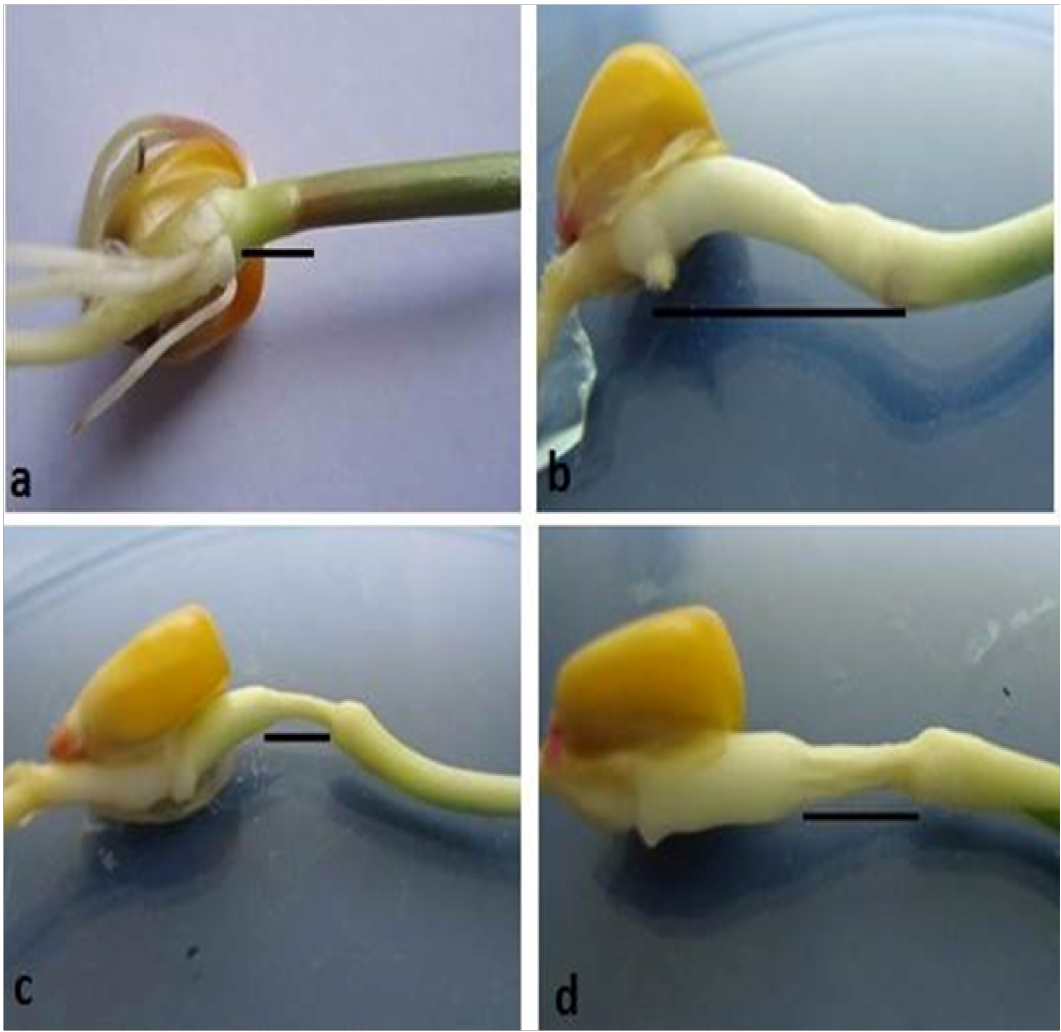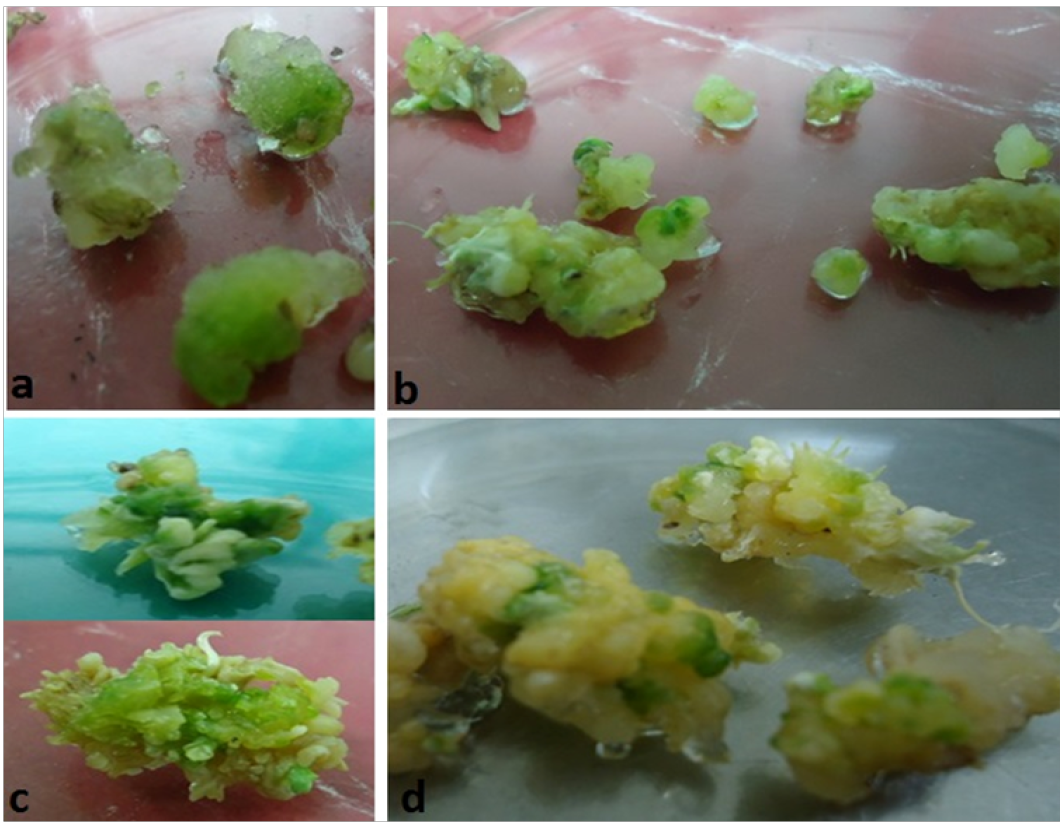In Vitro Plant Regeneration from Coleoptilar Node of Maize Seedling: a New Tool to Bioengineer the Maize Rapidly
In Vitro Plant Regeneration from Coleoptilar Node of Maize Seedling: a New Tool to Bioengineer the Maize Rapidly
Zaheer Abbas*, Shaukat Ali, Jalal-Ud-Din and Ghulam M. Ali*
Effect ofdifferent germination media on number of roots and diameter of coleoptilar node. a, more number of roots developed on GM-I; b, less number of roots developed on GM-II; c, normal diameter of coleoptilar node developed on GM-I; d, increased diameter of coleoptilar node developed on GM-II.
Effect of BAP and picloram on the mesocotyle of maize seedling. a, reduced length of mesocotyle on medium devoid of BAP and picloram (GM-I); b, enhanced length of mesocotyle on medium containing BAP and picloram (GM-II); c and d, shrinkage of some portion of mesocotyle on GM-II.
Callus induction response from coleoptilar nodes developed on different germination media.a, calli induced from coleoptilar node developed on GM-I; b, calli induced from coleoptilar node developed on GM-II.
Development of embryogenic and non-embryogenic calli on embryogenic media. a,1, 2 and 3, embryogenic calli developed on EM-III; 4, 5 and 6 non-embryogenic calli developed on EM-III; b and c, embryogenic and non-embryogenic portions of embryogenic calli developed on EM-III.
Silver nitrate enhanced the type II calli production. a, type I calli developed on EM-III; b, type II calli developed on EM-III fortified with 5 mgL-1silver nitrate.
Morphological differences in embryogenic calli of maize obtained through different regenaration methods. a and b, embryogenic calli derived using REM-I; c and d, embryogenic calli developed with REM-II; e and f, resultant embryogenic calli with REM-III.
Regeneration of embryogenic calli. a, regeneration of embryogenic calli using REM-I; b, regeneration of embryogenic calli using REM-II; c and d, regeneration of embryogenic calli using REM-III.
Various steps involved in efficient regeneration of coleoptilar node. a, maize seedling developed on GM-II; b, longitudinal sections of coleoptilar node; c,calli induced from longitudinal sections of coleoptilar nodes; d, embryogenic calli with green spots were produced with REM-III; e and f, shoots development from regeneratedcallus with REM-III.
















